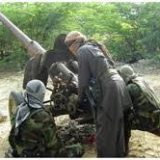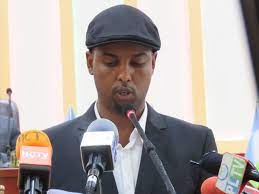Uganda calls for bolstering Somali army
|
advertisements
|
Ugandan Defense Minister Crispus Kiyonga has asserted the urgent need to bolster Somalia’s national army, calling on the international community and donor nations to help towards this end.
“A Somali National Army must be built yesterday,” Kiyonga said at a retreat in Kampala for representatives of countries that have contributed troops to the African Union Mission in Somalia (AMISOM).
“The young people are there – we’ve seen them and we’ve trained them [in order] to ensure that the Somali National Army is built quickly,” he added.
Kiyonga insisted that the key to stabilizing Somalia was the establishment of its own national army, so that the lives of African troops killed in the long-troubled Horn of Africa nation would not have been lost in vain.
“There have definitely been costs. We have lost a lot of troops, as on Dec. 25, when four AMISOM soldiers, including one Ugandan military officer, were killed,” he said. “And many [others] have been maimed.”
Kiyonga lamented, however, that some donor countries had insisted on the “partial sponsorship” of AMISOM troops, which, he said, had made work difficult.
He added: “You find some of our partners saying, for the army, I will support 4,000. No, if the army is 10,000, what happens to the balance? This partial support does not work, at least not in Africa.”
Somalia has remained in the grip of on-again, off-again violence since the outbreak of civil war in 1991. The fractious country recently appeared to inch closer to stability after government troops and African Union forces drove Al-Shabaab militants from most of their strongholds.
Abdullahi Mahmoud, a Somali national security advisor who attended the event, echoed the Ugandan minister’s call.
“One of the things I recommended to the Somali government was to build a national army; we need it urgently,” Mahmoud told The Anadolu Agency.
“Our international partners, including AMISOM and the UN, are very keen to get this underway because Somalia can’t live under AMISOM’s [protection] forever. The sooner we do this, the better,” he said.
He sounded optimistic, while saying that there was a strategy to this end, along with a willingness on the part of the country’s partners and donors.
Under the leadership of former President Mohamed Said Barre, who ruled from 1969 to 1991, Somalia had 150,000 uniformed army personnel.
“We are down to 20,000 at the moment, but this must be increased to 50,000 or 60,000 this year. It’s a huge task, but one we can do,” he told AA.
AMISOM troops, deployed in Somalia since 2007, currently total around 22,125 troops.
Alongside the fledging Somali army, AMISOM has carried out military campaigns – such as “Operation Eagle” in January 2014 and “Operation Indian Ocean” in September 2014 – in which most Al-Shabaab-held districts in the central and southern parts of Somalia were liberated.
However, most newly liberated areas are stand-alone towns that have negligible connections with the rest of the country and to which supplies can only be delivered by air.
“For instance, Al-Shabaab is still keeping sites in towns like Beled Weyne and Baido, which were liberated during Operation Eagle and Operation Indian Ocean,” Mahmoud told AA.
He added that Al-Shabaab blockades were being used to force residents to flee into areas under their control.
“These blockades have caused – and still cause – the death of men, women and children who have to walk long distances in search of food,” he added.
Yet, he said, efforts intended to address the problem were being hindered by a lack of access to government services on the ground.
“Ground access is limited in more than 70 percent of districts in the southern and central regions due to insecurity,” he said, asserting the need to secure safe routes to allow commercial traffic, humanitarian access and the delivery of public services.
Frequent fighting between Al-Shabaab and allied forces also takes a human toll and causes more displacement among the local population, exacerbating food insecurity.
In the Buloburte district of the south-central Hiiraan region, where many elderly people live, many have died of starvation, Mahmoud said.
This is due to fears of Al-Shabaab attacks despite government attempts to deliver food to the Jalalaqsi district, for example, which is located less than 150km away.
According to the United Nations Office for the Coordination of Humanitarian Affairs in Somalia, approximately one million people remain in emergency conditions, while over a million others have been internally displaced.





















